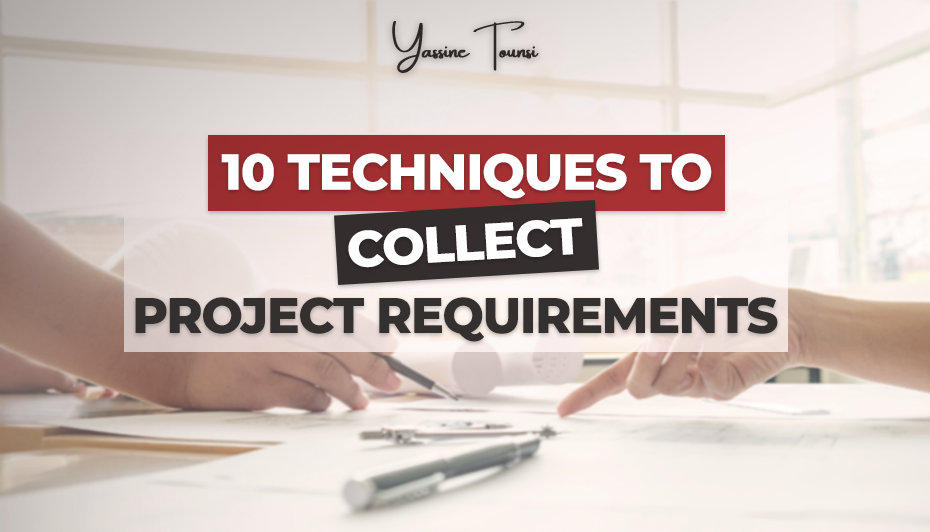Accurately gathering your project requirements is one of the most critical aspects in assuring its success. However, collecting requirements from stakeholders can be challenging. Without a clear understanding of what stakeholders want, your project can easily deviate from its course.
Since each project is unique, there is no standard strategy for eliciting requirements. In fact, combining multiple approaches may be the most effective way because it will cover more project areas and thus guarantee that all stakeholders’ needs are identified and documented.
Here are 10 practical techniques and tools that will help you gather your stakeholder requirements effectively.
Interviews
Interviewing stakeholders is a form of direct communication that provides insight into their expectations and demands. You can prepare a list of questions ahead of time to increase the chances of eliciting detailed requirements, then you can take notes and archive the answers you obtained.
Focus groups
Focus groups entail assembling a small group of stakeholders to discuss various ideas and expectations. This interactive group discussion can yield a wide range of perspectives, identify common requirements, and even put the ideas to a vote. In contrast to one-on-one interviews, focus groups are intended to be more conversational.
Observation
This technique involves watching a potential user of the product to identify requirements. Studying users in their natural work environment allows you to better understand their processes, challenges, and interactions with existing systems. This will help you pinpoint exactly what the users require. Observation is particularly valuable for uncovering implicit and hidden requirements that users may not express or even be aware of.
Surveys
Surveys and questionnaires are effective tools for collecting data from a large group of people. They can be a useful alternative for meetings and one-on-one interviews, which are frequently time-consuming, particularly when working with numerous stakeholders and massive amounts of data, or when stakeholders are geographically dispersed. Moreover, the information you gather using this strategy should be easy to review and interpret.
Expert judgement
If you or your stakeholders are new to the project field or lack market knowledge, expert judgment can be a highly effective strategy for gathering requirements. It involves consulting with subject matter experts to identify project requirements based on their significant expertise and deep understanding of a certain area of study relevant to the project.
These specialists may provide useful insights about the project scope, speed up the requirement-gathering process, anticipate potential risks, and provide accurate and credible requirements, hence increasing the likelihood of project success.
Research
This technique involves researching existing documents to elicit project needs. Reviewing previous documentation and records of other similar projects, whether in the same or different companies, such as process flows, business plans, technical specifications, and other kinds of materials may offer substantial background information while also identifying present gaps and future needs.
Benchmarking
Benchmarking is the process of comparing a company’s current or projected procedures to those of similar businesses to identify best practices. To be successful and sustain market position among competitors, the company needs to understand market dynamics, competitors, and its own strengths and limitations. Through Benchmarking, businesses can investigate best-in-class practices, develop ideas for advancement, set performance standards, and consequently establish their requirements for improving their present position.
Diagrams
The diagrams technique entails capturing and establishing project requirements through visual representations like flowcharts, use case diagrams, mind maps, etc. These illustrations aid in the simplification of complex material, the identification of gaps and deficiencies in requirements, and improved stakeholder comprehension and interaction. Using diagrams contributes to the clear, thorough, and effective identification of project requirements.
Technology
Technology can be employed for conducting research on project requirements. Drone technology, for instance, can be used in agricultural projects to monitor the land and gather data before launching the project. Various AI tools and platforms can also be leveraged to collect, organize, and evaluate project requirements.
Technology promotes a streamlined gathering of project requirements, allows for real-time collaboration and updates, and produces well-organized, precise documentation.
Prototyping
Prototyping is about creating a simplified version of the proposed product to obtain early feedback from stakeholders on requirements. Prototypes allow stakeholders to better understand and visualize the expected outcome. This iterative process helps refine requirements, make necessary adjustments, and ensure the end result meets user expectations.
Effective requirements gathering is fundamental, as it sets the foundation for developing a product that aligns with or exceeds stakeholder expectations. To ensure you end up with a complete list of clear and well-documented requirements, you simply need to choose the right techniques and tools. Selecting the appropriate technique or mix of techniques is determined by the particular context of your project, stakeholder availability, and the complexity level of the requirements.
